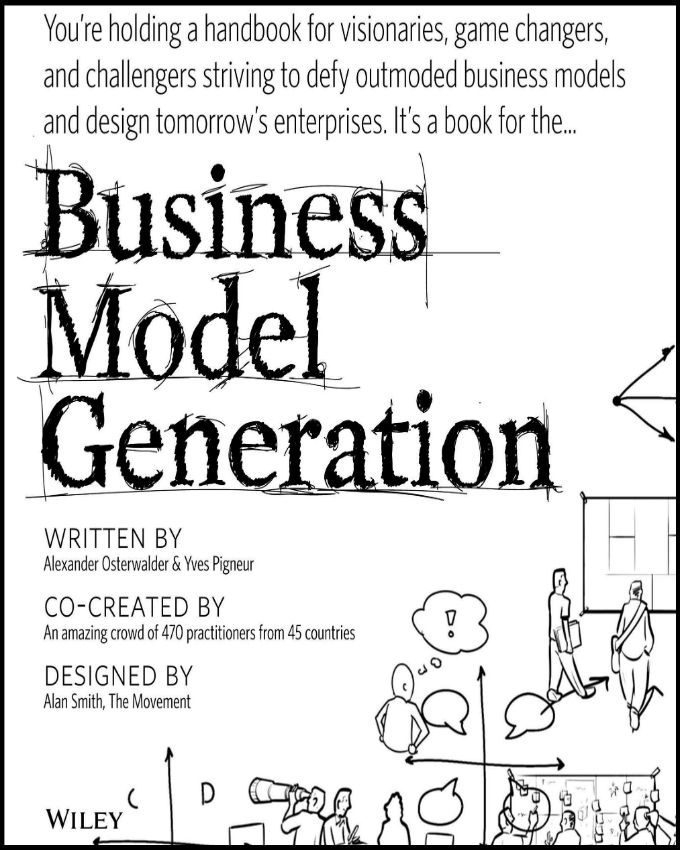Business Model Generation A Handbook for Visionaries, Game Changers, and Challengers, by Alexander Osterwalder, Yves Pigneur

Section 1
Canvas
The Business Model Canvas
A shared language for describing, visualizing, assessing, and
changing business models
Chapter Contents
Definition of a Business Model
The 9 Building Blocks
The Business Model Canvas Template
Def_Business Model
A business model describes the
rationale of how an organization
creates, delivers, and captures value
The starting point for any good discussion, meeting, or workshop on business model
innovation should be a shared understanding of what a business model actually is. We
need a business model concept that everybody understands: one that facilitates
description and discussion. We need to start from the same point and talk about the
same thing. The challenge is that the concept must be simple, relevant, and intuitively
understandable, while not oversimplifying the complexities of how enterprises function.
In the following pages we offer a concept that allows you to describe and think through
the business model of your organization, your competitors, or any other enterprise.
This concept has been applied and tested around the world and is already used in
organizations such as IBM, Ericsson, Deloitte, the Public Works and Government
Services of Canada, and many more.
This concept can become a shared language that allows you to easily describe and
manipulate business models to create new strategic alternatives. Without such a
shared language it is difficult to systematically challenge assumptions about one’s
business model and innovate successfully.
We believe a business model can best be described through nine basic building blocks
that show the logic of how a company intends to make money. The nine blocks cover
the four main areas of a business: customers, offer, infrastructure, and financial
viability. The business model is like a blueprint for a strategy to be implemented
through organizational structures, processes, and systems.
The 9 Building Blocks
CS Customer Segments
An organization serves one or several Customer Segments.
VP Value Propositions
It seeks to solve customer problems and satisfy customer needs with value propositions.
CH Channels
Value propositions are delivered to customers through communication, distribution, and sales Channels.
CR Customer Relationships
Customer relationships are established and maintained with each Customer Segment.
R$ Revenue Streams
Revenue streams result from value propositions successfully offered to customers.
KR Key Resources
Key resources are the assets required to offer and deliver the previously described elements . . .
KA Key Activities
. . . by performing a number of Key Activities.
KP Key Partnerships
Some activities are outsourced and some resources are acquired outside the enterprise.
C$ Cost Structure
The business model elements result in the cost structure.
1 CS
Customer Segments
The Customer Segments Building Block defines the
different groups of people or organizations an
enterprise aims to reach and serve
Customers comprise the heart of any business model. Without
(profitable) customers, no company can survive for long. In order to
better satisfy customers, a company may group them into distinct
segments with common needs, common behaviors, or other
attributes. A business model may define one or several large or
small Customer Segments. An organization must make a conscious
decision about which segments to serve and which segments to
ignore. Once this decision is made, a business model can be




